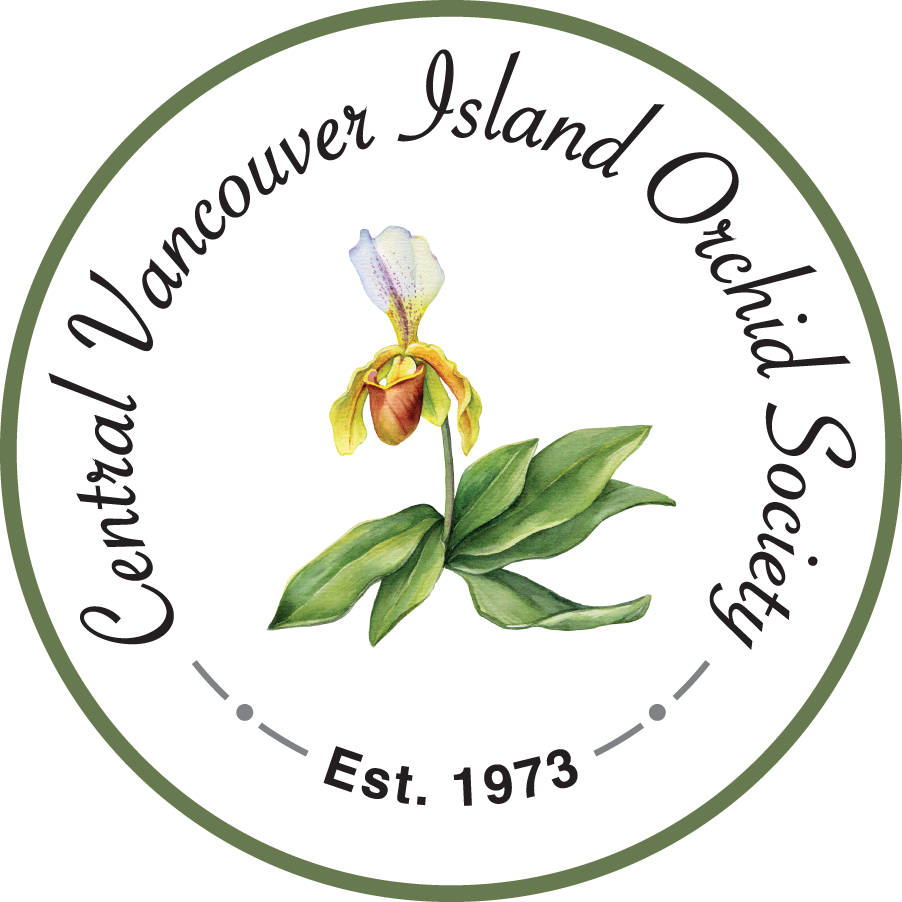Dr. Wally Thomas - Growing Odontoglossums
This page is dedicated to Dr. Wally Thomas (December 1920 - January 2013)
Dr. Wally Thomas signed in as a guest of the Vancouver Orchid Society ("VOS") in April, 1958 and became Vice President in 1960. He has been President of the VOS several times and was a co-chair of the 16th World Orchid Conference which was held in Vancouver in 1999. Wally was also one of the four founding members of the Odontoglossum Alliance and it is still going strong. The first meeting was held in Vancouver and is now an international organization.
Wally had purchased two plants in 1958. They did not last very long but the interest in orchids had been sparked. It was not long till he built his first greenhouse, bringing up rocks for the foundation from the beach. Soon that was full and another greenhouse was built, then another and another and then the porch was enclosed to house some more. A word of warning to beginners. You should take a course in self-control as you start an orchid collection. As you get bitten by the orchid bug, try to control yourself. (Very few are successful at restraint.)
Wally's favourite orchid are the Odontoglossums in particular are the red and white
crispum.
These are cool growers so Wally maintains his greenhouse somewhat differently than others who grow Cattleyas or other warmer loving orchids.
Odonts are very suitable for the area Wally grows. There is a constant cool breeze and the plants receive the right amount of shade/light intensity.
Fertilizer and Water
Wally feeds his plants with a fertilizer level of 400-500 micro Siemans using a 7-11-27 fertilizer supplemented with Calcium Nitrate. Including the Calcium Nitrate the fertilizer works out to 10.5-6.6-16. Note the relative low level of Phosphorus and relatively high level of Potassium compared to the common 20-20-20 on the shelf of many garden centers. (Note: if 1,000 micro Sieman is equal to 666 parts per million then 500 micro Siemens is approximately 333 ppm on a TDS meter)
Wally mentions that a good fertilizer product is Plant Prod 10-6-16 which does have Calcium included and is available at most hydroponic stores.
Wally will fertilize every 3 to 4 days in warm weather and cuts back to every 2 to 3 weeks in winter. A tried and true method to see if a pot needs watering is to lift it to feel the weight. A light pot needs watering while a heavy pot still has water.
Temperature / Humidity / Lights
As Wally grows Odonts he keeps the greenhouse at a minimum 50 F at night. The exhaust fans are set to avoid temperatures above 75 F. He heats (if you can call 50 F, heating) with natural gas with a backup electric source set to come on at 45 F.
Perlite Medium
Wally has done quite a bit of research on using perlite.
To view the article he wrote, click here.
Note that the perlite one can find at the garden centers is smaller than what is preferred. Larger perlite is available at Buckerfields and Dig This under the "Dutch Treat" label.
You can see Wally has the "right stuff". He recommends washing the perlite in a garbage can. Push it down in the water a few times and let it sit. The fine particles will drop to the bottom and the light larger material floats to the top.
You can see he uses hanging pots with a water reservoir. Here is a pot with perlite mixed with styrofoam peanuts ready for a new plant.
The perlite is top dressed with either clay pellets or pea gravel. This reduces evaporation, reduces algae growth and keeps the perlite from being washed out when watering. The clay pellets, pots and gravel are sterilized between uses in a bleach solution. Note the Windex bottle which is used for pest control. This was a tip suggested by Jerry.
Here are a couple of tips Wally shared.
1 When cutting roots he cauterizes the wound with a soldering iron to reduce the risk of infection.
2 If you need to spray for pest control with something like Malathion, set up a fan at one end and walk into the wind as you spray (only those plants that need it). This should help reduce the chance of breathing in the toxic fumes.
Wally mentioned that he has found that the reservoir pots produce better results if they are slightly tilted.
This shelf unit is stepped like a stair to provide room for the plants but utilize the floor space as efficiently as possible. I see that the ordinary pots have two 3/8" holes drilled 1.5" from the bottom to form a water reservoir.
Note the use of hanging pots to fully utilize space
Part of the original greenhouse still producing vibrant colour after all these years.
The Dr. is still pursuing his scientific interest in how can growing be improved. Here he has a "net" pot suspended in an outer pot. The question is, will the roots grow better just in the humid air between the water reservoir in the outer pot and the bottom of the perlite?
On the back wall is an exhaust fan powered by a small solar panel. It works when the sun is out (that being the only time the exhaust fan needs to run) and is variable speed depending on the intensity of the sun. An interesting twist on automation.
Thanks very much to Wally for sharing his tips on growing.
His method is different from what most are used to.
His results have been impressive for years.
The beginner should keep your mind open to different ideas, try them out and use what works for you.






